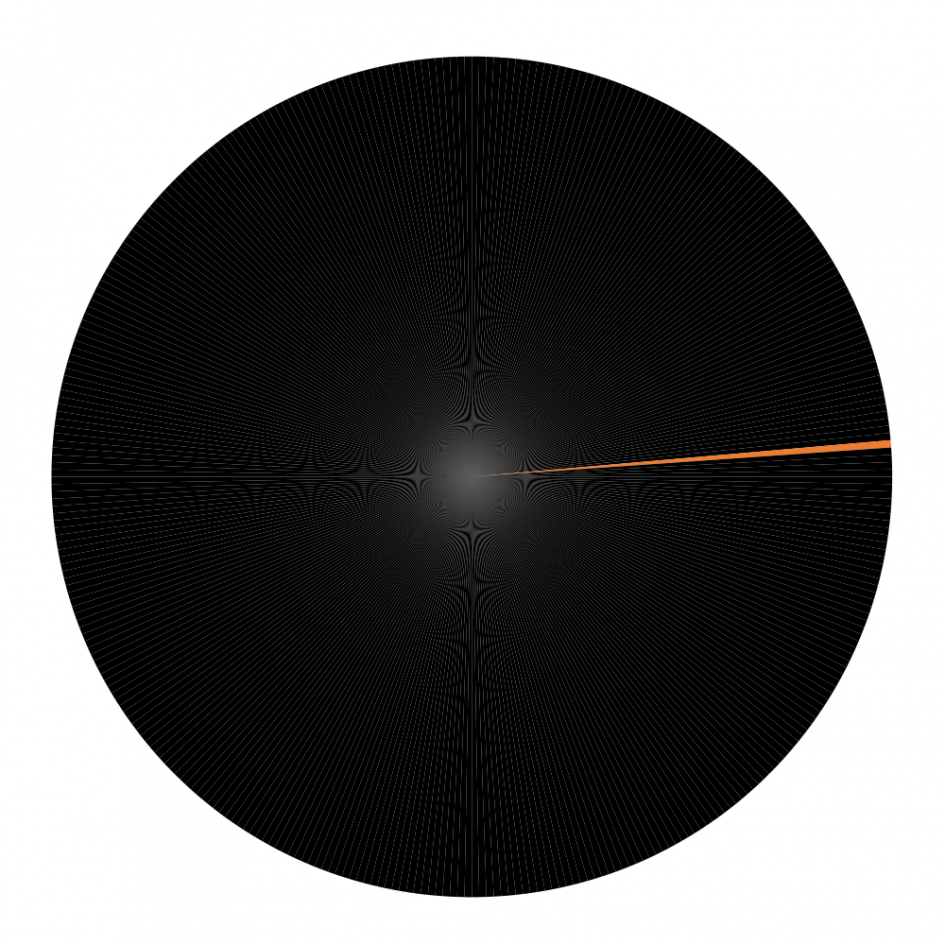What is a Minute of Angle?
A minute of angle is a measurement of angle. If we think of a circle, this is a shape made up of 360 Degrees. Each of these degrees is made up of 60 “minutes”. Minutes can then broken down further into seconds, like the minutes on a clock being broken down into 60 seconds. When talking about shooting, however, seconds are far too fine to take into account, so we use Minutes.
1 Degree is 1/360th of a Circle.
1 Minute is 1/60th of a Degree.
1 Second is 1/60th of a Minute.
How does this pertain to shooting?
MOA is one of two standardised units of measurement adopted for shooting.
MOA is the imperial measurement, whereas Mil (Or Milliradians) is the metric equivalent.
Sights, whether telescopic, iron, dioptre, red-dot or otherwise generally come in either MOA or Mil (apart from some Russian offerings which don’t come in either), in Civilian Britain MOA is the most widely adopted format, however more and more shooters are moving to Mil, along with the Armed Forces.
How will knowing MOA help me hit my target?
Using a standardised measurement of angle such as MOA gives us a relationship for adjusting our sights based on bullet trajectory, or bullet impact.
If we were to draw a triangle that had the 2 longest sides 100 yards long (since MOA is imperial I will work examples in yards rather than metres) and joined them together, they would be 1.047 inches apart. Therefore we can deduce that at 100 yards 1 MOA is 1.047”.
We can then use this information to our advantage. We know that if we are hitting 2 inches to the left of target and one inch high at 100 yards, we need to move 2 minutes to the right and 1 minute down to get on target. Since sights in MOA usually come in ¼ MOA clicks or 1/8 MOA clicks. We can calculate how many clicks that will be. (8 right, 4 down or 16 right and 8 down respectively).
What about at longer range?
Since MOA is an angular measurement, those longest edges of triangle lines are perfectly straight, which means it is a linear progression. At 200 yards it would be 2.094”(2 x 1.047), 300 yards = 3.141” (3 x 1.047). At 600 yards it would be 6.282” and at 1000 yards it would be 10.47”.
Usually people will refer to MOA as 1” at 100 yards, but as you can see, when dealing out at 1000 yards or more, that thinking is adding almost half an inch or more margin of error.
What about MOA under 100 yards?
Simply move closer down the triangle; at 50 yards an MOA is ½ that of it at 100 yards, 0.5235” just over half an inch. And at 25 yards it is ¼ that of 100 yards, 0.26175”.
It’s worth noting that sights that are made specifically for close range can often be smaller than ¼ or 1/8 MOA clicks. For example, Anschutz Target Dioptre Sights come in 1/6 MOA and 1/12 MOA (which ties in with Milliradians – but that’s for another time). This is for ultimate fine tuning at close range, as you can imagine where 1/12 MOA at 25 yards would be 0.0218125”, or in metric, just over half a millimetre, per click.















1 Pingback